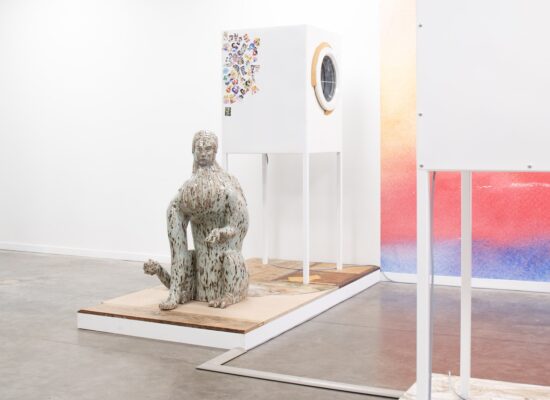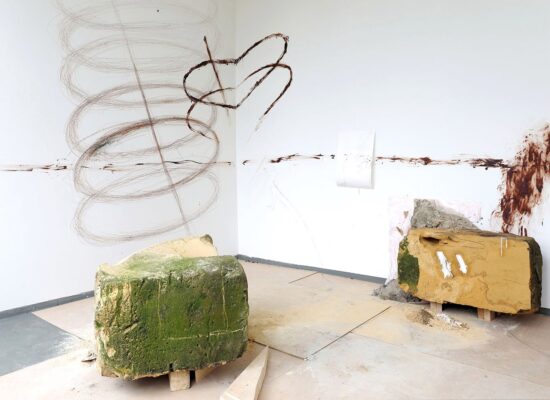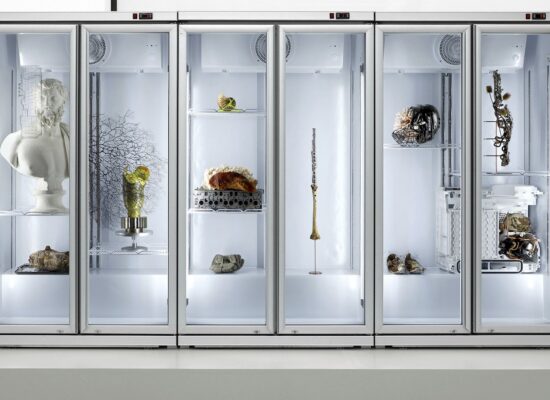How do you describe your own art practice?
In my work, I investigate personal memories and stories that can be understood through the collective unconscious. I’m interested in the objects that surround us and how, when removed from their original context and function, they can take on metaphorical or archetypal meanings.
By developing a relationship with an object, exploring its appeal and the interaction between its meanings and my own thoughts, I hope to reveal the aspects that intrigue me. In my approach, I search for the border where language seems to end, where its exactness is questioned, like a bygone memory, something that has eluded me. My work speaks of a feeling or a thought that can no longer be traced back to its origin, a moment of recognition and alienation.

glazed ceramic, 36 x 40 x 22 cm
Which question or theme is central in your work?
The human psyche and what makes us who we are, both on a personal level and on a larger scale. Art allows me to reflect on this while creating. For me, my work is a way to escape the fleeting nature of everyday life. Sometimes my process is (un)consciously slow because I want to imbue the objects with meaning and allow them to grow over time.

Variable dimensions and material
What was your first experience with art?
The first thing that comes to mind are the monster books I made with my cousin. I think we were about eight years old, and we both loved to draw. We created a monster book together and went door to door to sell it. An older lady gave us some money, but we were allowed to keep the book.

Foreground – Georgie, 2023
leather, latex, epoxy, thread, ø 68 cm
Background - Darkness visible, 2020
paper, soft pastel, 198 x 150 cm
What is your greatest source of inspiration?
Reading. There are many things that influence my work, but if there is one thing that has a significant impact on the development of ideas, it’s reading. In addition to reading, I walk a lot. It’s a way for me to process everything. Often, it’s during these walks that I come up with solutions for the projects I’m working on. During these walks, I take a lot of photos and pay attention to what’s around me—textures, objects, buildings—anything that grabs my attention. I see my memory as a kind of container, where all these things float around. It’s often while reading that images emerge from the sentences I read, as if all the impressions I’ve gathered before are being cast into a mold.

found object, wood, filler, paint, 104 x 9 x 14 cm
What do you need in order to create your work?
Time, a calm and clear mind, and a space where I can work in a dusty, slow-paced manner.

Foreground – Mijn hart luchten, 2018
metal, paint, rope, 25 x 64 x 15 cm
Background - I feel certain I am going mad again, 2017
raincoat with riverstones in the pockets, hanger, 100 x 60 x 5 cm
What work or artist has most recently surprised you?
Andre 3000. After his time as part of the hip hop duo OutKast, he returned solo with an album consisting solely of instrumental flute music. I have a soft spot for people and artists who swim against the current. Those who stay true to themselves, make choices that are close to their essence, and dare to make decisions that may even be unpopular.

painted moving boxes, filler, video projection inside, 201 x 208 x 238 cm




